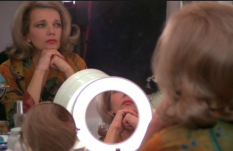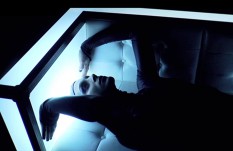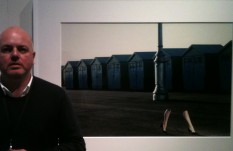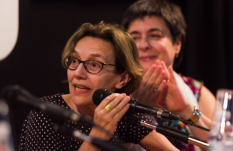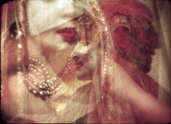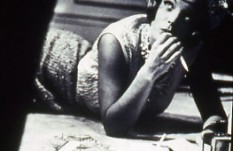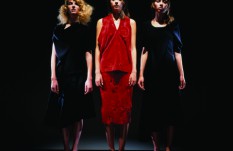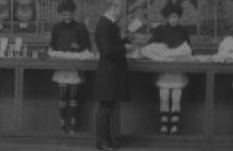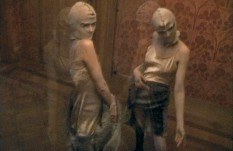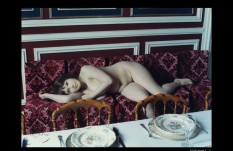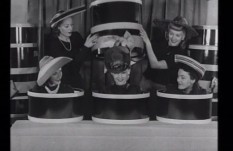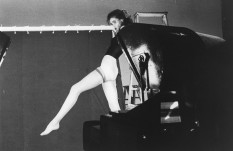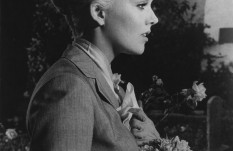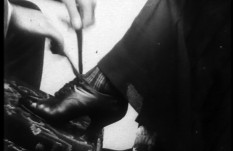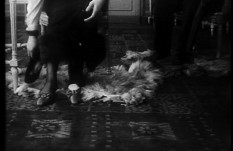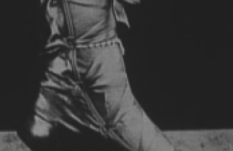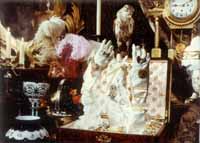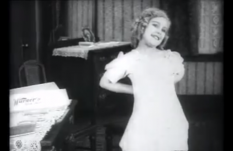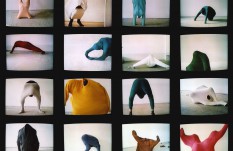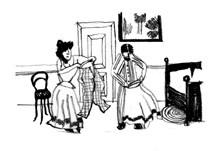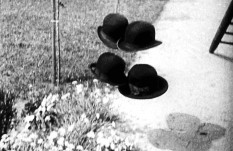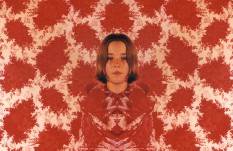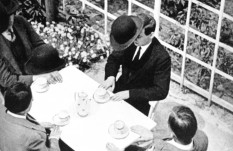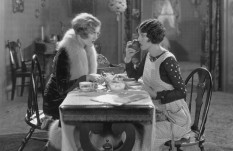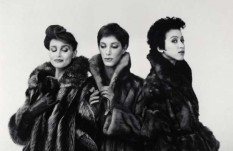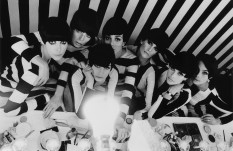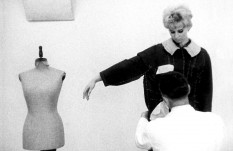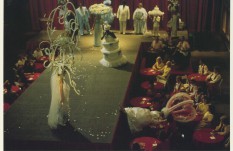Research
An integral part of all Fashion in Film projects, research helps develop a deeper understanding of how the worlds of fashion and film have intersected since the beginning of cinema.
Working with filmmakers, scholars, distributors, fashion designers, artists and film archivists internationally, Fashion in Film provides a platform for rare and never-before-seen films. Going beyond showcasing contemporary fashion films, our aim is to address current practices in a broader context. We explore the convergence of fashion and film throughout the history of the moving image, from early cinema to the present day. As well as raising awareness of remarkable costume and set design, we encourage a critical re-examination of how fashion and fashionable dress have been represented in film, and how film has used fashion as a form of visual spectacle.
Interdisciplinary by its very nature, our research spans not only fashion and the moving image but also design, art, literature, popular visual culture, aesthetics, politics and society.
Our past research has been supported by numerous organisations, including Central Saint Martins, London College of Fashion, French Institute, Arts Council England, City University of New York and the British Council.
We organise public workshops, seminars and symposia, and have participated in events at venues including the Arnhem Mode Biennale, AIGA’s international design conference, Design Museum Holon and Yale University.
Essay by Kim Coleman: ‘How do I Look? Mirrors and Dressing in John Cassavetes’s Opening Night (1977)’
‘The more artifice a person covers themselves with, the deeper the pain.’ Artist Michelle Handelman in conversation with Aya Noel
New York-based artist Michelle Handelman, whose film Irma Vep, The Last Breath is included in our current season WEARING TIME: PAST, PRESENT, FUTURE, DREAM, talks to Aya Noel about women in cinema, identity and costume as a state of mind.
In conversation: Alistair O’Neill, co-curator of Guy Bourdin: Image Maker
Marketa Uhlirova has asked Alistair O’Neill about his curatorial process in organising the retrospective exhibition of Guy Bourdin, the photographer’s legacy and those elusive ‘fashion films’.
A Conversation with Mariann Lewinsky
Caroline Evans, Marketa Uhlirova, Vincenzo Maggitti, Elif Rongen and Elizabeth Lundén caught up with film curator Mariann Lewinsky at this year’s Il Cinema Ritrovato in Bologna to talk fashion, silent film performances and archival research.
Fashion in Film: Drag Glamour panel discussion
Essay by Alistair O’Neill: Dressing and Undressing
‘…it does not serve primarily as a rise to eroticism; rather, it produces an evocation of seemingly empty time, but one brimming with disconnection.’
Essay by Penny Martin Shelly Fox 14 and I Feel
‘It is the differing circumstances of the films’ production that divide the two, giving each its individual cinematic character and communicating something different about the process of making contemporary fashion imagery.’
Essay by Sam Serafy Four Beautiful Pairs of Legs
‘…the film simultaneously exposes the erotic as a constructed illusion, one that these working women do not take at all seriously.’
Essay by David Bate Patricia & Marie-France Martin’s C’est comme être
‘Finally, the twins both pull on what look like homemade balaclavas, demonstrating that getting ready is a form of preparation for camouflage and deception.’
Essay by Christel Tsilibaris Assuming a Pose
‘…intrigued by the confusion between the artificial body of the shop dummy and the real one of a poser who is shown in the moving image as momentarily immobilized.’
Essay by Marketa Uhlirova and Bakri Bakhit Wardrobe Emergencies
‘What place does fashion occupy during a war conflict? Is there – and can there be – room for fashion at times when poor economic conditions, coupled with great anxiety and uncertainty, permeate people’s lives, turning them upside down?’
Essay by Ed Barber Fashion Records
‘An environment inhabited by highly focussed and energetic people, driven by an obsession with image, style and the look of things. A global community, in fact, with an amazing ability to promote itself.’
Essay by Adrian Garvey Hitchcock’s Woman of Fashion
‘Lisa…theatrically displays her new dress…establishes the tension between the couple’s highly gendered professional lives…’
Essay by Charles Musser On Shoes and Kisses
‘…the viewer an implicit part of a circuit of desire that is centered on the shoe. We lack the tactility of touch enjoyed by the shoe clerk and the customer, but we see all.’
Essay by Christel Tsilibaris Marcel Fabre’s Amor Pedestre
‘The lady’s shoe holds a very special position within the film. It is not only a sign of the wearer’s gender and social class, it is also the central element of the plot, the very reason for which passions are ignited.’
Essay by Christel Tsilibaris Shoes, Eroticism and Fetish
‘…the seductive powers of female footwear will be explored through the male attraction to the foot dressed in a shoe, as well as through the female fascination with the actual fashionable object.’
Essay by Petra Dominkova and Vaclav Kofron The Extinct Globe and the Found Glove
‘The performance of (animated) actors and actresses is replaced by a performance of different kinds of gloves.’
Essay by Sam Serafy Warner’s Corset Advertisement
‘…a textbook example of product endorsement, employing methods that would later became standard in television commercials.’
Essay by Renate Stauss Erwin Wurm’s 59 Positions
‘Dress shapes our bodies, makes sculptures of us. Capable of modifying not only the body itself in its proportions, but also our image of it and that of our selves, clothing shapes the self physically and psychologically.’
Essay by Lynda Nead Georges Méliès’s Le déshabillage impossible and Ferdinand Zecca’s Monsieur et Madame sont pressées
‘Within this context of fashionable layers and the proliferation of fasteners, trimmings and openings, the processes of dressing and undressing took on a particular symbolic significance…’
Essay by Marion von Hofacker Richter’s Films and the Role of the Radical Artist 1927-1941
‘In the German culture of the nineteenth century, hats that fly from people’s heads were a sign of existential danger looming in the near future.’
Essay by Caroline Evans Anna-Nicole Ziesche’s States of Mind and Dress
‘The clothes themselves spring into action, as if to combat the inertia of their wearers.’
Essay by Marketa Uhlirova The Enigma of the Fashion Object
‘The Enigma programme probes in detail the behaviour of the object of fashion in the moving image. It invites clothes to step out of their closets, making their secret lives known.’
Essay by Marketa Uhlirova The Wonderland of Fig Leaves
‘Howard Hawks’s Fig Leaves (1926) tells a story of a marital dispute and a transformation of a female heroine from a wholesome, housebound girl to a refined, sophisticated and independent woman.’
Essay by Pamela Church Gibson Qui Êtes-Vous, Polly Maggoo?
‘The questions he [William Klein] raises around identity and masquerade are still resonant – while the excesses of the fashion world and the mania around celebrity are even more relevant today.’
Essay by Peter Hames Vera Chytilová’s Ceiling
‘The fact that these images of women for women are the creation of men is emphasised…Even her subjective thoughts are spoken by a man.’
Essay by Roger K. Burton: Loving the Alien
Looking at the work of four diverse directors who dared to turn the camera on that sub-species of “fashion aliens” who exist within our own society.

